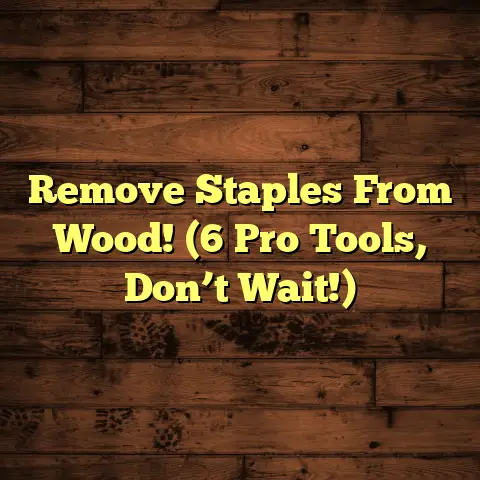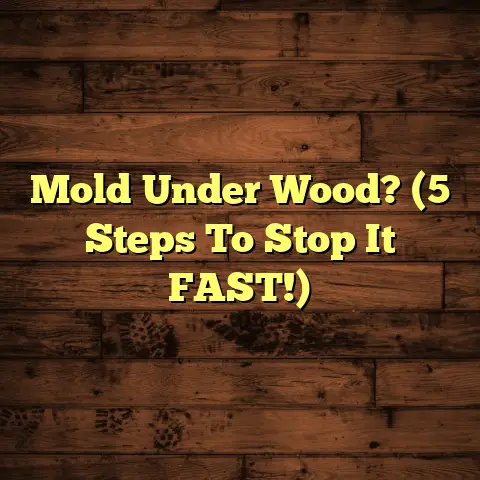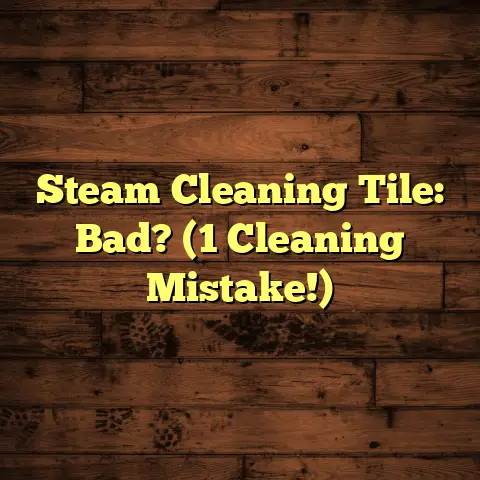Flooring Cost For 1000 Square Feet (Explained)
Installing hardwood flooring in your home or business can be a significant investment, but with the right information, you can make informed choices that suit your aesthetic preferences and budget. This guide will break down the costs associated with installing hardwood flooring in a 1000 square foot area, including various factors that influence pricing, comparisons with alternative flooring options, and tips for maintenance.
Major Cost Factors Impacting Hardwood Flooring Installation
When estimating the cost of hardwood flooring installation, several key factors come into play:
1. Area Size
The larger the area to be covered, the more material and labor will be required. For a standard 1000 square foot space, you can expect costs to scale accordingly.
2. Hardwood Type
Different species of hardwood have various costs associated with them. Common options include:
- Oak: Affordable and durable; typically ranges from $3 to $8 per square foot.
- Maple: Slightly harder than oak and priced similarly.
- Cherry: Known for its rich color and beauty; costs between $5 and $10 per square foot.
- Walnut: A premium choice with a distinctive look; prices can range from $8 to $15 per square foot.
- Engineered Wood: Generally less expensive than solid wood, ranging from $2 to $6 per square foot.
3. Labor Costs
Labor can significantly affect your total installation costs. Rates can vary widely based on geographic location and the complexity of the installation. On average, professional installation can cost between $4 and $10 per square foot.
4. Additional Considerations
- Floor Removal: If there is existing flooring, removal services may add $1 to $2 per square foot.
- Subfloor Replacement: If the subfloor is damaged and needs replacing, this can add another $2 to $4 per square foot.
- Material Grade: Higher-grade materials often yield higher costs.
- Room Size/Layout: Complex layouts may require more cutting and fitting, increasing labor costs.
- Installation Type: Nail-down installations are generally more expensive than floating installations.
Detailed Cost Breakdown for 1000 Square Feet
Here’s a rough cost estimate for installing hardwood flooring in a 1000 square foot area:
| Cost Factor | Low Estimate | High Estimate |
|---|---|---|
| Hardwood Material (e.g., Oak) | $3,000 | $8,000 |
| Labor (Installation) | $4,000 | $10,000 |
| Floor Removal | $1,000 | $2,000 |
| Subfloor Replacement | $2,000 | $4,000 |
| Total Estimated Cost | $10,000 | $24,000 |
Note: Prices are estimates and can vary based on location and specific project details.
Comparing Hardwood vs Alternative Flooring Options
When considering hardwood flooring, it’s essential to compare it to other popular flooring options:
1. Laminate Flooring
- Cost: Typically ranges from $1 to $5 per square foot.
- Pros: More affordable, easier to install, and available in various styles.
- Cons: Not as durable as hardwood and can look less authentic.
2. Vinyl Flooring
- Cost: Ranges from $1 to $7 per square foot.
- Pros: Water-resistant options are available; easier maintenance.
- Cons: Less aesthetic appeal compared to hardwood.
3. Carpet
- Cost: Ranges from $2 to $5 per square foot installed.
- Pros: Soft underfoot and warm; available in many textures and colors.
- Cons: Can stain easily and requires regular cleaning.
Signs Your Hardwood Floors Need Replacement
Knowing when to replace your hardwood floors is crucial. Signs include:
- Severe Scratches or Gouges: Deep damage that cannot be sanded out.
- Water Damage: Warping or buckling due to moisture exposure.
- Inconsistent Colouring: Fading or discoloration that affects aesthetics.
- Structural Issues: If the boards are loose or creaking excessively.
Refinishing vs. Replacement
If your hardwood floors are in decent shape but look worn down, refinishing might be a better option than complete replacement. Consider these points:
- Refinishing: Sanding down the top layers and applying new finish can restore the look at a fraction of the cost of new flooring.
- Replacement: Necessary if structural damage is present or if the wood is too thin to sand effectively.
Pros and Cons of Hardwood Flooring
Pros
- Aesthetic Appeal: Timeless beauty that adds value to your home.
- Durability: With proper maintenance, hardwood floors can last decades.
- Eco-Friendly Options: Sustainable wood choices are available.
Cons
- Cost: Higher upfront investment compared to alternatives.
- Maintenance: Requires regular cleaning and refinishing over time.
- Temperature Sensitivity: Can expand or contract with humidity changes.
Professional Installation vs. DIY
Cost Differences
Hiring professionals typically adds $4 to $10 per square foot for installation. DIY can save money but comes with its own set of challenges.
Tools Required for DIY
To install hardwood flooring yourself, you’ll need:
- Saw (circular or miter)
- Hammer and nails or flooring nailer
- Level
- Measuring tape
- Spacers
- Safety gear (gloves, eye protection)
Skills Needed
Basic carpentry skills are essential. Improper installation can lead to issues like gaps between boards or uneven surfaces.
Questions to Ask Hardwood Flooring Contractors
When hiring a contractor, consider asking the following questions:
- What is included in your estimate?
- Are you licensed and insured?
- Can you provide references from previous clients?
- What is your timeline for completion?
- What type of warranty do you offer on your workmanship?
Hardwood Floor Care and Maintenance Tips
To maximise the longevity of your hardwood floors:
- Regular Cleaning: Sweep or vacuum regularly to remove dirt and debris.
- Use Appropriate Cleaners: Opt for products specifically designed for hardwood floors.
- Control Humidity Levels: Maintain indoor humidity between 30% and 50% to prevent warping.
- Place Mats at Entrances: To reduce dirt tracked onto the floor.
- Refinish as Needed: Sand and refinish every 5–10 years depending on wear.
Conclusion
Investing in hardwood flooring for a 1000 square foot area can enhance the beauty and value of your space but requires careful consideration of costs and factors influencing those costs. By understanding your options, comparing alternatives, assessing signs of wear, and choosing the right installation method, you can ensure a successful flooring project that meets your needs.
With this comprehensive guide in hand, you are now empowered to make informed decisions about your hardwood flooring installation. Whether you decide to go professional or take on the DIY challenge, knowing what to expect will help you achieve a stunning result that you’ll enjoy for years to come.





